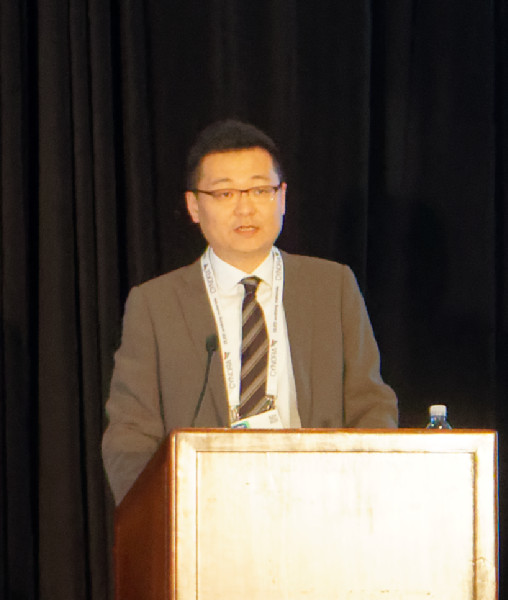 BOE Technology is doing well, said Leono Guo, the GM of the firm’s overseas business, and it’s the top supplier of panels for smartphones, tablets and notebooks, and it’s the second largest for monitors and third for TV.
BOE Technology is doing well, said Leono Guo, the GM of the firm’s overseas business, and it’s the top supplier of panels for smartphones, tablets and notebooks, and it’s the second largest for monitors and third for TV.
Sales are growing strongly with 43% CAGR and BOE has many patents – it filed 7570 ‘usable’ patents in 2015, bringing its cumulative patent portfolio to more than 50K. In 2016, BOE was eighth in global patent applications.
Turning to the industry, there are new opportunities in the IoT area. The time of IoT has started and the opoprtunities will be very big with the smart home, the internet of vehicles, and BOE wants to be at the forefront. By 2020, the market could be valued at $8 trillion with 50 billion devices in the market (cumulatively) by 2020. What can the display do in IoT, Guo asked? In the past only devices usually have only one function, but now more communication is needed between devices now.
What is BOE doing in this area?
BOE sees three key areas as the IoT develops. One of the core industries is display and its related areas. It will also look at sensors and intelligent communications. Guo said that BOE will reposition itself as an IoT supplier.
What are the actions that should be taken to achieve this, he asked? First, the company is building production lines for displays aimed at UHD, flexiblity and with touch, borderless and ultraslim. It has eleven factories and is building two flexible OLED lines – which it is still establishing.
BOE will move strongly into healthcare services – it is building digital medicine technology and medical education as well as a research centre – the firm already has two BOE hospitals in China.
The company is developing the BOE iGallery (see our show report) as an online art museum with artistic content. The firm will also will expand into cloud computing and services.
Analyst Comment
These are ambitious plans, but, so far, the firm has shown itself to be very quick at catching up with existing suppliers. (BR)

